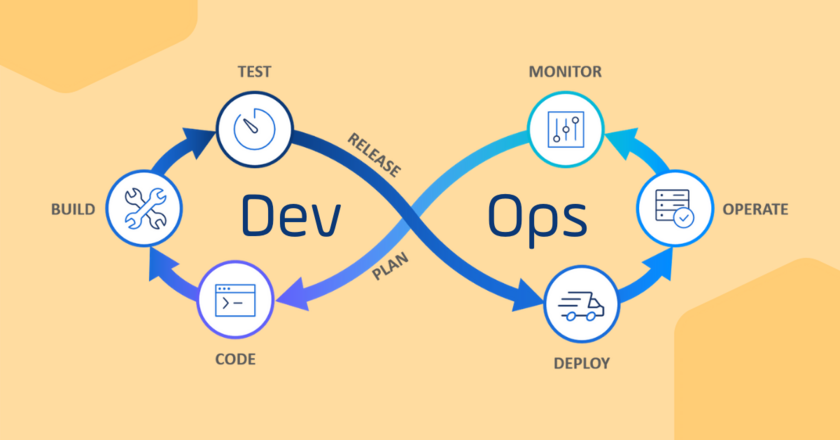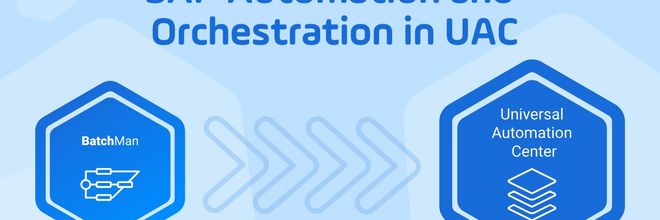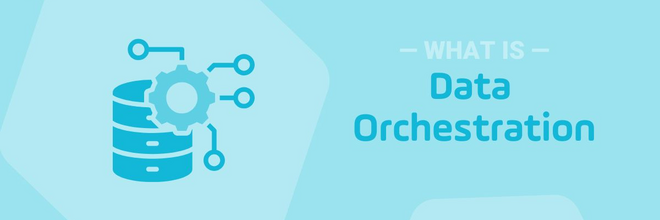What is DevOps, Why Does it Exist, and How Does it Help?
How organizations leverage a DevOps model, and how modern workload automation solutions can support a Jobs-as-Code model.

Introduction: What is DevOps?
DevOps, defined by IDC as “a methodology and set of practices that unify a team consisting of business leadership, development, testing, deployment, and operations to be responsible for the creation and delivery of business capabilities,” is revolutionizing the way businesses approach IT, as well as overall business processes and operations. DevOps brings together previously siloed IT subdivisions of IT development, operations and infrastructure under one umbrella, allowing them to become part of a unified IT operations and orchestration strategy that is coordinated across the entire enterprise.
This unification of IT subdivisions into a coordinated unit creates a DevOps taskforce that can tackle development and operations initiatives as a coordinated effort. Automation plays a major role in the DevOps model: “a modern DevOps automation solution,” according to a recent IDC report on the subject, “requires a closer working relationship between development and operations teams, utilizing automation as a common language.”
The DevOps model also relies on the integration and use of a real-time, event-based workload automation solution. It is therefore referred to in this context as DevOps automation. DevOps automation can build a path to a future way of working that involves iterative rollouts of features tailored to propel the business forward, based on analytical data from prior releases, system performance, and feedback.
The continuous delivery offered by the DevOps approach can therefore shorten TTM, and encourage innovation, creativity and first-hand learning across the business. Meanwhile, IT process automation managed by a reliable WLA solution can continue to ensure that reliability and stability can be maintained across the landscape with minimal human intervention or effort. Having a strategy in place that both stabilize and grow the existing IT landscape is the most functional path to digital transformation.
Why Adopt a DevOps Approach?
Organizations following the curve of modernization require the adoption of DevOps automation in order to remain competitive and offer the kind of seamless digital business landscape expected of them, both by their customers and end users, and by their own workforce. DevOps automation, in these cases, is used as a catalyst. Enterprises that take full advantage of the DevOps methodology are able to focus on innovation through a cyclical practice of testing, continuous integration, and delivery.
DevOps automation can also drive businesses forward by bringing together the previously separate development and product management teams. Using Agile, together they have the ability to shorten product update and feature rollout time, incorporating more feedback throughout their processes.
DevOps Automation Demands More of Modern Organizations
Modern organizations implementing DevOps automation face several categories of challenges and obstacles before they can claim to have successfully put the DevOps methodology in place.
1. Cultural Challenges
Of course, in order for the above-mentioned cross-departmental efforts to work, there also needs to be a shift in culture across the organization that encourages joint DevOps projects, which must also gain buy in from all involved parties and teams.
Thinking specifically in terms of automation, collaboration can be increased through the use of features such as:
- Flexible task performance & completion: tasks that are set to begin or finish based on event-based triggers, rather than a schedule, allow for a more flexible workflow overall.
- API Integrations: the more integration an automation platform is able to support, the more business processes it is able to automate, manage and accurately report on.
2. Technological Challenges
Another challenge organizations face is the replacement of solutions that no longer offer the capabilities needed to support modern automation features. In their place, IT executives need to look to procure modern automation solutions that offer:
- Contemporary web-based GUI or interface offering a view of the entire landscape that keeps various types of users and stakeholders in mind
- An interface that is self-service enabled, empowering all kinds of users, from business level to developers, to use the solution to their advantage when it comes to making core processes more automated and efficient
- Real-time auditing, analysis and reporting of issues across the landscape, allowing for quick or automatic action if errors or failures occur at each phase of each process
- Automation for cloud platforms and SaaS tools, as hybrid cloud and multi cloud are certainly the way of the future for many organizations
- Full ability to support container and container orchestration, given that DevOps, among other models, is founded on the ability to move workloads from one cloud environment to another.
- Integrations that function bidirectionally, offering expanded benefits to the overall business
- Staging and promotion capabilities that allow for easy movement of a process or workflow from development to production
- And more
3. Organizational Challenges
In order to succeed, IT executives must maximize the strengths of their multi-disciplinary team when procuring novel automation solutions and implementing a DevOps approach:
Leadership: this group has organizational knowledge, as well as awareness of business culture and power to push for change. Leaders should help determine the overall business needs.
Development: this group should be tasked with determining a plan of action for better supporting business needs through the deployment of new features or updates. Ideally, they will create new code iteratively to be deployed piece by piece, working together with operations to ensure that the intended result is reached.
IT Operations: this group can be tasked with automating as much of normal operations as possible in order to better support Dev team, optimizing the results of the data and analytics collected to determine future projects and ways of innovating that will make the software better for the users.
The DevOps team can then report findings back to leadership, who can measure results against the original business goals, creating a constant flow of iterative testing and improvement that supports the business. By automating much of the standard day to day operations, operations is able to work together in collaboration with the development team on innovative solutions that do not require completely new software, but rather features, patches and updates that solve small issues and can be deployed faster than an entirely new product.
DevOps Combined with Workload Automation to Create Jobs-as-Code
IT automation solutions not only need to have the ability to support the DevOps protocol, but need to be designed specifically to help move DevOps initiatives forward with as little disruption to their process as possible.
DevOps teams are not looking for yet another tool or solution to work out of. They are most interested in using automation tools that can be seamlessly integrated into the tools that they natively work in every day. Over the past few years, DevOps teams have turned to workload automation to help achieve this goal.
Workload automation can help DevOps via the Jobs-as-Code model. The Jobs-as-Code approach allows DevOps to work within the programming environments they already use. This approach builds the steps required to execute a workload, or job, into the code itself. Beyond helping developers to work within their native applications, the Jobs-as-Code approach includes version details that are deployed as part of standard packages. One-off scripts are essentially replaced with automation that helps to move code through the entire development process.
More advanced workload automation solutions will include touchpoints across both third-party repositories, like GitHub, and internal development tools. This helps to create a seamless automated workflow for the whole team to use across the entire development lifecycle.
Closing Thoughts on DevOps and the Future of Business
IT landscapes are only going to become more complex. Workload automation solutions and tools need to be flexible enough to fit comfortably into IT strategies based on the DevOps methodology so that DevOps teams can easily incorporate them, rather than pushing for a complete toolset overhaul. The right workload automation solution will reduce the human effort required to manage workloads and daily tasks, allowing the team instead to focus on data analysis and business process optimization.
For IT executives, the biggest challenge moving forward will be to build and maintain a culture that not only encourages, but requires the collaboration of development, operations and infrastructure teams in order to support an overall digital transformation strategy that serves the entire organization through better and faster service delivery.
Start Your Automation Initiative Now
Schedule a Live Demo with a Stonebranch Solution Expert






